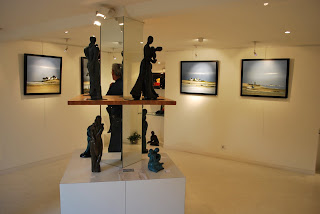
Like many bloggers I often wonder who is reading my blog. Sure, I check my webstats from time to time and I can see where in the world readers are based. I can see what search engines they use. I can often tell if my efforts to promote my blog are successful.
It can get a bit lonely and empty; typing away and spending hours uploading photos and organising things but it seems to be important to me right now, to share my experiences and it will be a great gift to myself to be able to read my thoughts and hopes as they evolve. I forget so much of my life. You know how it is... looking back over old photos and thinking "Hey, yeah, I'd forgotten all that." Sometimes they are precious memories of our children. How is it we forget so many little personal details?

 I recently received the hardbound version of my blog. It covers April 2010 until the end of June 2011. It's professionally printed with a table of contents and the photos are nicely presented. Organising the material takes a fair bit of time online but it's worth it to me to have a physical copy of my adventures trying to get to France. I'm going to continue my blog for a bit longer because I still don't know what will happen to me in terms of work, being able to stay here and also my relationship with my lovely Jean-Claude. So much is unknown but I don't think about that too much. I'm taking each day as it comes and appreciating the good people I interact with each day but it's rather special to be able to read about them and look at photos and re-experience the pleasure of those events.
I recently received the hardbound version of my blog. It covers April 2010 until the end of June 2011. It's professionally printed with a table of contents and the photos are nicely presented. Organising the material takes a fair bit of time online but it's worth it to me to have a physical copy of my adventures trying to get to France. I'm going to continue my blog for a bit longer because I still don't know what will happen to me in terms of work, being able to stay here and also my relationship with my lovely Jean-Claude. So much is unknown but I don't think about that too much. I'm taking each day as it comes and appreciating the good people I interact with each day but it's rather special to be able to read about them and look at photos and re-experience the pleasure of those events. I had a new experience on Saturday. I met one of my most consistent blog readers who had come all the way from New Zealand. Alison has a love of France and lived here on an exchange for a year. She was determined to holiday here this year and suggested we get together in Paris. Alison probably knows me pretty well from all my blogposts and I knew a little bit about her.
I had a new experience on Saturday. I met one of my most consistent blog readers who had come all the way from New Zealand. Alison has a love of France and lived here on an exchange for a year. She was determined to holiday here this year and suggested we get together in Paris. Alison probably knows me pretty well from all my blogposts and I knew a little bit about her. Jean-Claude kindly offered to come into Paris with me, providing transport and bravely battling the parking nightmare so Alison and I could meet. Alison and her friend Janet wandered around Montmartre with JC and me. The weather was again disappointing; cold and raining.
Jean-Claude kindly offered to come into Paris with me, providing transport and bravely battling the parking nightmare so Alison and I could meet. Alison and her friend Janet wandered around Montmartre with JC and me. The weather was again disappointing; cold and raining.It's been a bad summer so far and we only had very infrequent really good days a month or so ago. We got slightly damp but sheltered for a bit in the Sacre Coeur on the top of the Montmartre hill. As churches go it's not that impressive and you're not allowed to take pictures inside. Despite the weather the place was full of visitors so we shuffled along, trying not to lose each other.

After the church we strolled around Place du terre which is the place where artists gather to draw the tourists for a ibt of income.It's very touristy but you have to expect that. Some of the artists were impressive, some had novel talents to capture the attention of anyone wanting a portrait. I hope Alison will enjoy a few days of better weather before she heads back to NZ. It was lovely to meet a reader and I hope that in future I might meet others.Blogging really comes alive when you're face to face with with those who take the time to be interested in your writing.

In less than a week Laura will arrive. That will be very special, meeting up again after such a long separation. We'll have lots of things to do together but it will be different. I left her behind in NZ still a child and barely independent. I'll be meeting a young woman at the airport. She's grown up while I've been away.

Photos of JC and I and Alison and Janet at Montmartre's Sacre Coeur and Place du Tertre.
























































